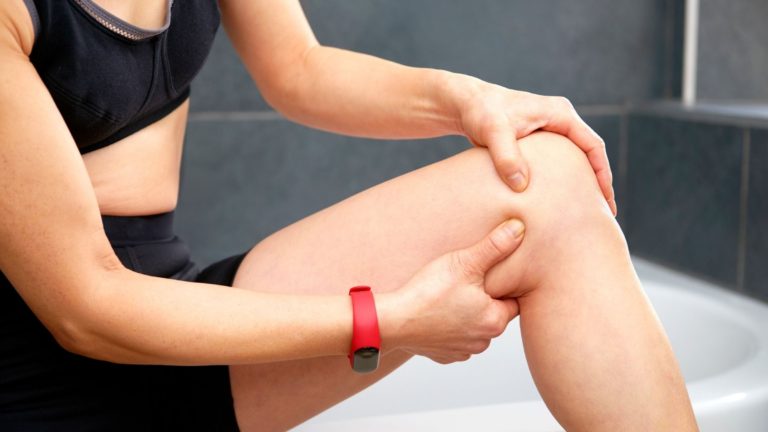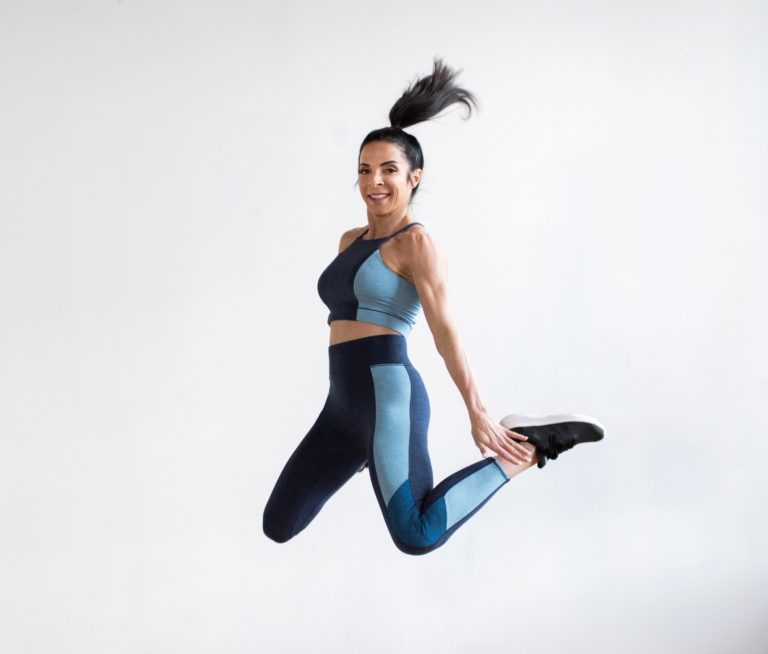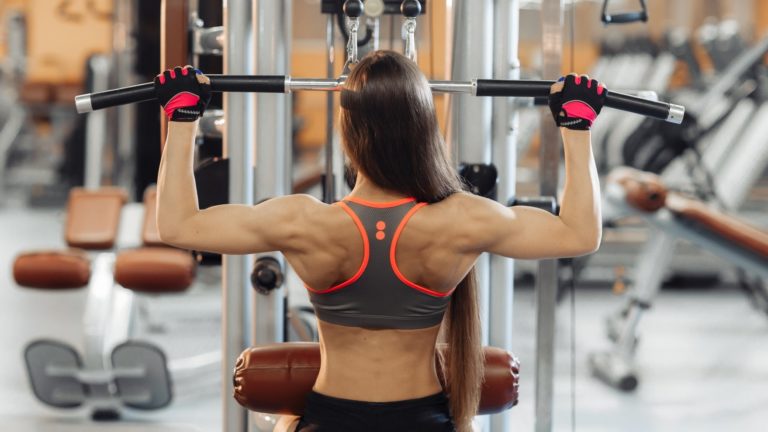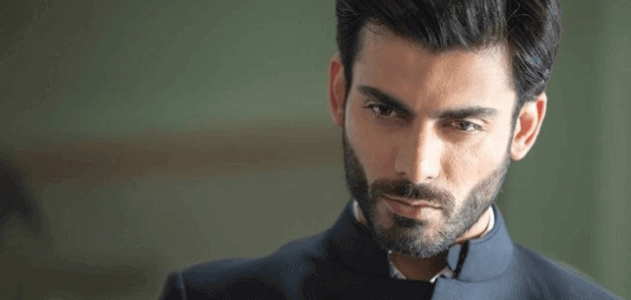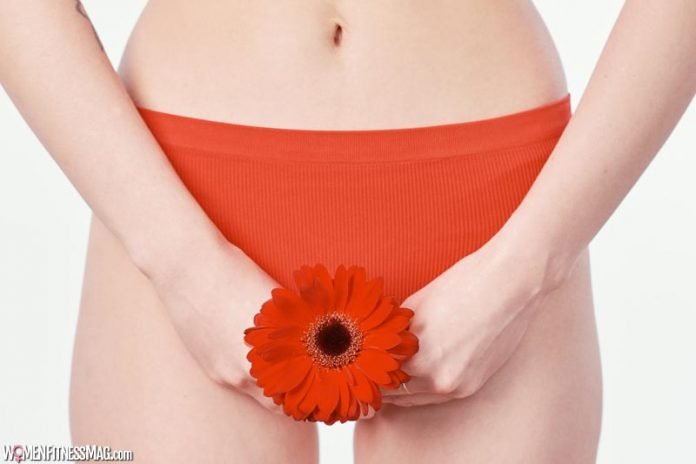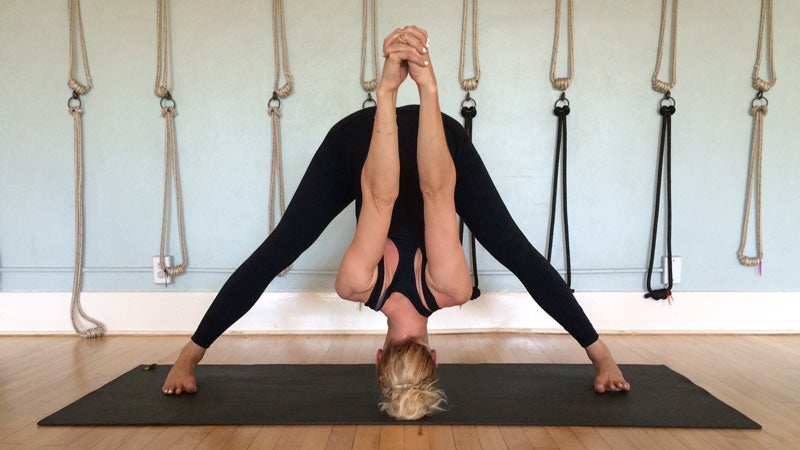
7 Yoga Poses to Relieve Tight Shoulders
Get full access to Outside Learn, our online education hub featuring in-depth fitness and nutrition courses and more than 2,000 instructional videos when you
sign up for Outside+.
Dealing with a pesky twitch in your shoulder? Having trouble moving your arms around? A tight shoulder may be the culprit, and yoga can help provide relief.
The shoulder is the most mobile joint in the body and is used in many different activities, from reaching for an object on a tall shelf, raising your arm to use a hand rail, or carrying heavy bags of groceries. Because of this, it’s understandable that it may get tweaked accidentally or feel a little sore from overuse, even if you weren’t consciously working those muscles.
The shoulder itself is actually a complex band of eight muscles that protect the shoulder joint, or glenohumeral joint. When thinking of the shoulder, most people think of the deltoid, the triangular-shaped capsule covering the glenohumeral joint that provides the bulb-like appearance. It’s used when you raise your arm and protects the glenohumeral joint from dislocating when carrying something heavy. But the shoulder also includes the muscles of the rotator cuff, which help your arm move in all directions. Consisting of the supraspinatus, infraspinatus, teres minor, and subscapularis, pain in the rotator cuff can develop from repeatedly lifting objects over your head, among other causes.
Your chest also plays a role in shoulder movement, with your pectoralis major and minor, which aid in throwing, lifting, and extension motions. Then there’s your latissimus dorsi, the largest muscle in your upper body. It’s also used in extension and internal rotation. The rhomboids major and minor connect the scapula to the thoracic wall, providing stability for the shoulder girdle. Finally, there’s your trapezius, which stabilizes your arm and rotates your shoulder blade.
All of this is to say that there’s a lot going on when it comes to the shoulder, so stretching the whole area to release tension is necessary to ensure smooth and comfortable movement.
Yoga Poses for Tight Shoulders
1. Prasarita Padottanasana (Wide-Legged Standing Forward Bend)

While you may think of this pose as a hamstring or lower body stretch, the benefits to your shoulders come from the hand placement. Instead of dropping your hands to the floor in front of you, clasping them above your head releases tension in your deltoids and trapezius.
- Begin in Tadasana with your arms extended by your sides.
- Step your feet out so they’re in line with your wrists, keeping them parallel.
- Introduce an arm variation by clasping your hands together behind your back, letting your thumbs rest on your sitting bones.
- On an exhalation, fold forward from the hip joints, keeping your torso open. With fingers still interlaced and arms straight, press your knuckles toward the ceiling.
2. Marjaryasana (Cat Pose)
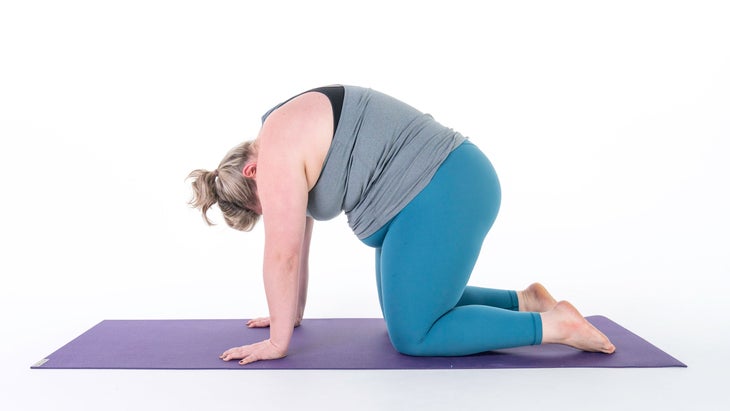
This movement targets your neck, back, and shoulders, providing excellent relief in a gentle way.
- Begin in Tabletop with your shoulders stacked over your wrists and your knees below your hips.
- On an exhalation, round your spine toward the ceiling and press through your palms, letting your shoulder blades glide apart.
- Release your head to the floor, bringing your chin toward your chest.
3. Bhujangasana (Cobra Pose)
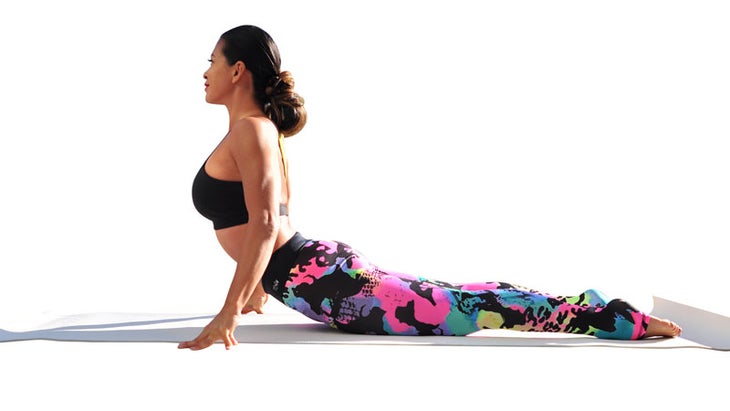
Open your chest and shoulders while releasing tension in your trapezius through Cobra Pose.
- Begin by lying on your mat with your legs straight behind you and your hands underneath your shoulders, keeping your elbows tucked in.
- Press the tops of your feet and thighs into the mat.
- On an inhalation, straighten your arms to lift your chest off the mat.
- Gently pull the shoulder blades back while opening up your chest, lifting through the top of your sternum without pushing your ribs forward.
- Lightly lift your hands off the mat and hover them above the ground about an inch before lowering them back down again. This motion ensures that the arch is coming from your back instead of through pushing too hard with your hands.
4. Uttana Shishosana (Extended Puppy Pose)

This cross between Child’s Pose and Downward-Facing Dog releases tension through your arms, shoulders, and neck while lengthening your spine. If the stretch in your deltoids is feeling too intense, rest your hands on a block to reduce the strain.
- Begin in Tabletop in the center of your mat.
- Walk your hands toward the top of your mat while keeping your arms straight and elbows in. Then curl your toes under.
- On an exhalation, rock your buttocks halfway back toward your heels.
- Release your forehead to the floor and allow your neck to relax while continuing to press down through the hands, keeping your arms straight.
5. Dhanurasana (Bow Pose)
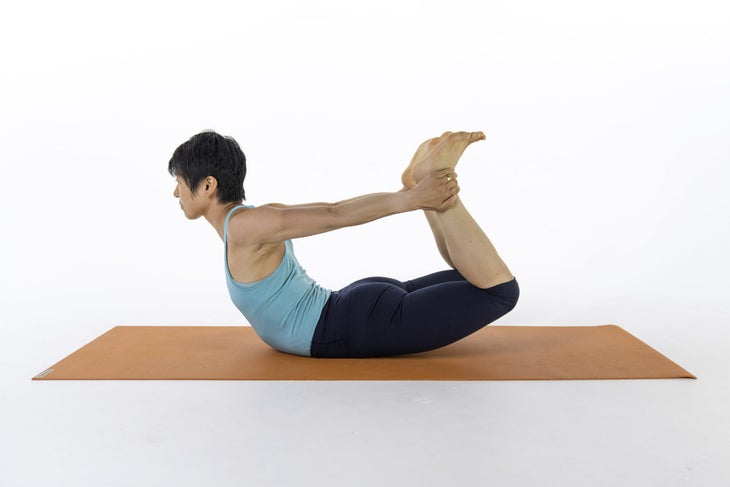
Open your chest while releasing tension in your neck, shoulders, and latissimus dorsi. This posture stretches your entire back and fights the effects of slouching.
- Lie on your belly with your arms by your sides, palms facing up.
- On an exhalation, bend your knees so that your heels are near your buttocks. Keep your knees at hip-width distance.
- Reach back with your hands to grab your ankles.
- On an inhalation, lift your heels toward the ceiling while elevating your thighs off your mat.
- Press your shoulder blades against your back to open your chest, and draw the tops of your shoulders away from your ears.
6. Natarajasana (Lord of the Dance Pose)

Lord of the Dance Pose is reminiscent of Bow Pose, except it’s a standing version focusing on one leg and arm at a time. Through standing, you may be able to push and pull a little deeper, providing a bigger stretch for your neck, shoulders, and upper back.
- Begin in Tadasana. On an inhalation, lift your left heel to your left buttocks as you bend your left knee.
- Reach your left hand back, grasping your left ankle or the outside of your left foot.
- Lift your left foot up toward the ceiling and away from your torso. Extend the left thigh behind you and parallel to the floor. Stretch your right arm forward, in front of your torso, parallel to the floor.
- To go deeper, focus on pressing your foot into your hand instead of leaning farther forward.
7. Garudasana (Eagle Pose)

This posture stretches the deltoids and upper back. The arm positions are the most important aspect for stretching your shoulders, so modify by either sitting down or standing on both legs.
- Begin in Tadasana. Bend your knees slightly, lift your left foot up, and cross your left thigh over your right thigh, wrapping your left foot around your right calf.
- Stretch your arms out in front of you, parallel to the floor. Cross your arms in front of your torso so your right arm is overtop of your left arm. Then, bend your elbows, placing your right elbow into the nook of your left elbow. Your forearms should be perpendicular to the floor with the backs of your hands facing each other.
- Press the right hand to the right and the left hand to the left, so that the palms are now facing each other. The thumb of the right hand should pass in front of the little finger of the left. Now press the palms together (as much as is possible for you), lift your elbows up, and stretch the fingers toward the ceiling.
— From Yoga Journal
See also:
Watch: These Poses Release Stress and Care for Tight Hips and Shoulders
6 Poses to Soothe and Strengthen Your Shoulders
10 Sequences for Tight Neck and Shoulders
Published at Mon, 02 May 2022 07:23:29 -0700
